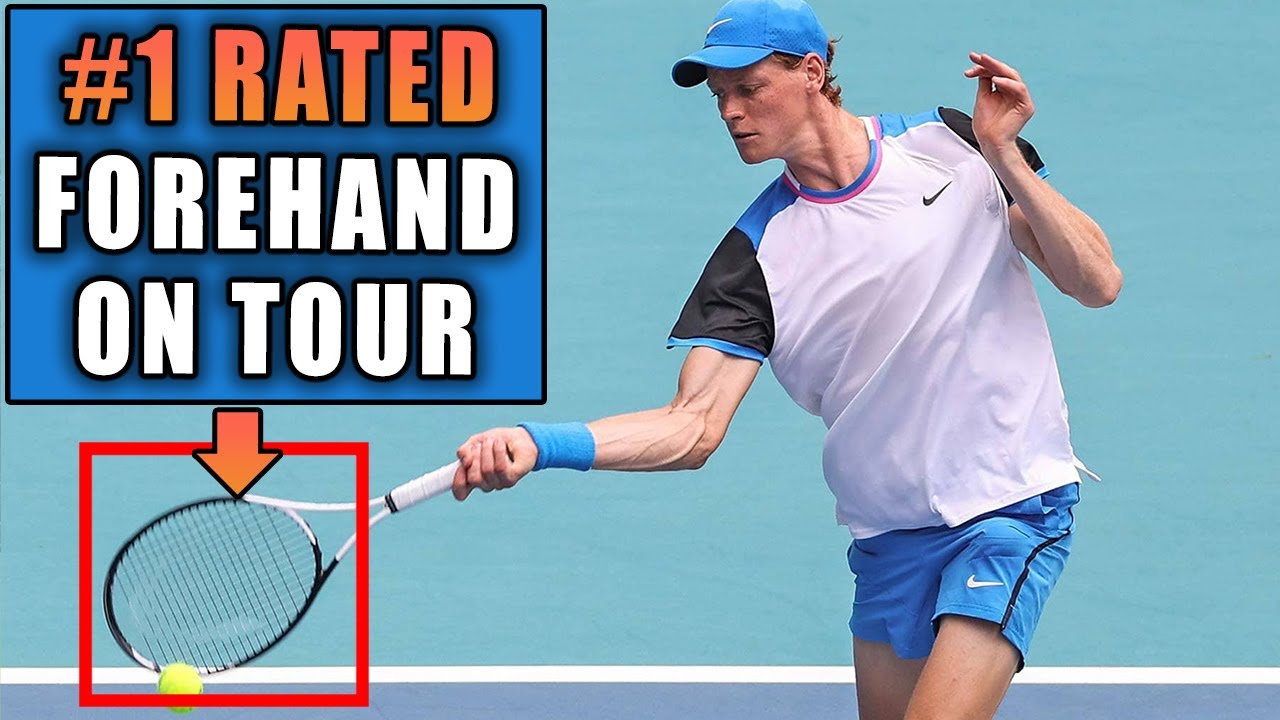Professional Volley Technique Explained | Volley Tennis Lesson
Summary
TLDRIn this tennis tutorial, John Craig from Performance Plus Tennis demonstrates how to hit volleys with professional quality technique, focusing on using underspin for control. He explains the importance of a continental grip, starting with the racket above the hand and finishing level, and maintaining an open racket face. Tips for both forehand and backhand volleys are provided, emphasizing the need for a one-handed backhand and avoiding a straight arm for versatility.
Takeaways
- 🎾 The video focuses on teaching professional-quality volley techniques in tennis.
- 🔄 Contrary to some coaching advice, advanced and professional players rarely hit flat volleys; they use volleys with underspin for better control.
- 🤚 To achieve underspin, players should use a continental grip rather than a forehand grip, which naturally positions the racket for better ball control and spin.
- 📏 The racket should start above the hand and finish level with the hand, creating a descending motion that helps apply underspin.
- 👋 The wrist should not release the racket; the motion should come from the shoulder to avoid awkward play.
- 💨 Implementing underspin allows for better control of the ball's trajectory, whether the ball is high or low.
- 👀 An open racket face is crucial for applying delicate touch and underspin to the ball.
- 📐 The trajectory of the ball is influenced by both the path the racket takes and the angle at which it makes contact with the ball.
- 🤳 For the backhand volley, maintain a one-handed approach with a continental grip for consistency and versatility.
- 🔄 The backhand volley should start with the racket above the hand and finish alongside it, with a slight flex in the arm for adaptability.
- 🔗 The principles of volleying apply to both forehand and backhand, emphasizing the importance of grip, racket angle, and underspin.
Q & A
What is the main focus of today's tennis lesson?
-The main focus of today's tennis lesson is to teach how to play the volley with professional quality technique, emphasizing the importance of underspin in controlling the ball.
Why is it not recommended to hit flat volleys according to the video?
-Flat volleys are not recommended because they lack control. Advanced and professional players typically hit volleys with an element of underspin, which provides better control.
What grip is suggested for hitting volleys?
-A continental grip is suggested for hitting volleys as it allows for an open racket face, enabling players to put delicate touch and underspin on the ball.
How should the racket position change during a forehand volley?
-During a forehand volley, the racket should start above the hand and drop in to finish level with the hand, creating an angle that allows for better control and underspin.
What is the significance of the racket's angle and path in determining the ball's trajectory?
-The trajectory of the ball is a blend of the path the racket takes and the angle the racket is on when it makes contact. This combination allows players to control the ball's direction and spin.
How does the continental grip help in achieving underspin on the ball?
-The continental grip naturally positions the racket face open, allowing players to clip through the ball and create underspin, which helps in controlling the ball's bounce and trajectory.
What is the recommended technique for a one-handed backhand volley?
-For a one-handed backhand volley, players should maintain a continental grip, start with the racket above the hand, and finish with the racket alongside the hand, ensuring a consistent angle and underspin.
Why is it important to avoid a straight arm in volleys?
-A straight arm in volleys reduces versatility. A flex in the arm allows for more adaptability and control, making it easier to adjust to different ball heights and speeds.
How can practicing volleys alone help a player?
-Practicing volleys alone allows a player to focus on the feel of the racket's angle and path, helping to develop control and precision in volleying.
What additional resources are offered for those interested in improving their volley skills?
-Additional resources include a video analysis program where players can send in their videos for personalized instruction, as well as links to more information in the video description.
Outlines

This section is available to paid users only. Please upgrade to access this part.
Upgrade NowMindmap

This section is available to paid users only. Please upgrade to access this part.
Upgrade NowKeywords

This section is available to paid users only. Please upgrade to access this part.
Upgrade NowHighlights

This section is available to paid users only. Please upgrade to access this part.
Upgrade NowTranscripts

This section is available to paid users only. Please upgrade to access this part.
Upgrade NowBrowse More Related Video

Learning crazy service skills

PRO Forehand In 5 Simple Steps | Tennis Forehand Technique Lesson

Modern Forehand Tips And Technique Explained | Tennis Forehand Lesson

Jannik Sinner Forehand Analysis- Footwork, Technique, Swing Path And MORE!

Top 5 Best Tennis Servers Of All Time (My Bias Opinion)

Carlos Alcaraz Serve Analysis- Powerful And Very Efficient!
5.0 / 5 (0 votes)